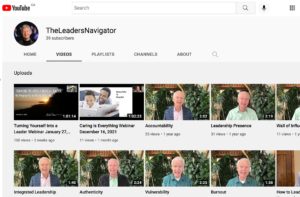One habit of good leadership is to be out in your culture, shining a light on success, celebrating wins, and catching people doing things right. There are likely some amazing things going on around you that you may be missing if you aren’t intentional. It’s natural for human beings to fixate on what’s not in our lives instead of focusing on what’s in our lives. Lately I’ve been putting this habit into practice in my own community. What I’ve discovered is that our little town is full of small giants (a term coined by Bo Burlingham), companies that deliberately choose to focus on excellence, purpose, and community impact rather than pursuing relentless growth or becoming as large as possible.
One of the small giants in Cochrane, Alberta is the Spray Lake Centre. Erin Wagner and her incredible team of leaders have created a vibrant, thriving, customer-focused environment that is at the heart and hub of our community for fitness, sports and recreation, as well as family and community connection. The SLS Centre also regularly hosts the Cochrane farmers’ market, both indoors and outdoors, and many other community events every year. When you visit Cochrane, stop by and get a shot of energy from this amazing place.
There are also many other small giants in Cochrane such as Found Books, Route 22 – Artist Collective Gallery, Yamnuska Wolfdog Sanctuary, Pink Wand Cleaning Services, Flores and Pine Restaurant, Alberta Metal Works, Align Developments, and the Cochrane Public Library. All of these organizations are part of Innovate Cochrane, a community-driven non-profit dedicated to empowering entrepreneurs and business leaders to build authentic, accountable organizations.
Everyone talks about the importance of culture, but when the pressure to deliver results mounts, culture takes a back seat. Like taking care of your health in times of high demands, it’s easy to declare, “we don’t have time for culture.”
But culture is always present, regardless of whether you are intentional about it. It is not a flavor of the month management fad. It’s the fabric of your entire organization.
Organizational culture is complex and multi-layered. To create and sustain a great culture requires leaders at every level to look beyond visible behaviors and statements from culture surveys to understand and influence the deeper beliefs that truly shape how organizations function.
My framework for organizational culture focuses on integrating the two fundamental elements of a great culture: authenticity and accountability in three areas: organizational, interpersonal, and personal.
The Importance of Authenticity
Authenticity means living in alignment with your true values, living and working in a place where you don’t have to leave who you are at the door, where you can express yourself genuinely, fostering meaningful connections and trust. Authentic cultures encourage open communication, vulnerability, and psychological safety to support people to tell the truth in a respectful way.
Leaders who lead authentically strengthen the overall sense of belonging and engagement in an organization.
The Importance of Accountability
Accountability means that we remember that culture isn’t what we say. Culture is how we hold ourselves accountable for how we act. You can’t build a reputation on what you’re going to do. Accountability starts with ownership. Accountability means that individuals and leaders take ownership for their decisions and their actions. We institutionally deny the fact that each of us – through our perceptions and our choices – is creating the culture that we so enjoy complaining about. Deciding that you have created the culture you are living and working in – and therefore you are the one to step into healing it – is the ultimate act of accountability.
Accountability means taking responsibility to work with clear expectations and agreements and being a person who can be counted on. It means having the tough conversations, providing regular mutual feedback, helping each other grow, and delivering on the promises you make. It means holding each other to the same high standards and asking for the support needed to deliver on agreements made.
How Authenticity and Accountability Work Together
Authenticity and accountability are mutually reinforcing. Authenticity creates the psychological safety necessary for people to be honest, while accountability ensures that this honesty translates into clearly defined and necessary results.
Authenticity supports people to operate from a place of truth, caring, and integrity, while accountability ensures that this integrity is backed by responsible action. Together they foster trust, engagement, and sustainable success in any culture.


